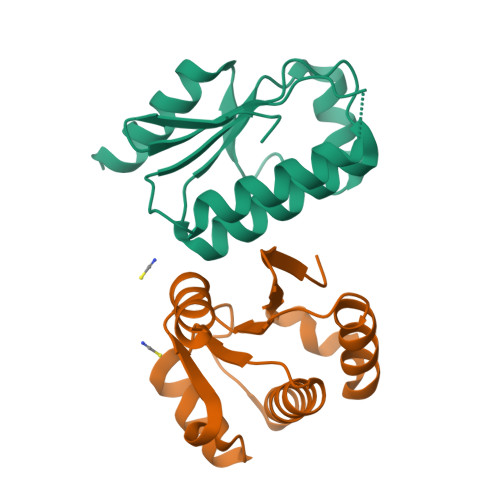The Bacterial Stressosome: A Modular System that Has Been Adapted to Control Secondary Messenger Signaling.
Quin, M.B., Berrisford, J.M., Newman, J.A., Basle, A., Lewis, R.J., Marles-Wright, J.(2012) Structure 20: 350
- PubMed: 22325782
- DOI: https://doi.org/10.1016/j.str.2012.01.003
- Primary Citation of Related Structures:
3ZT9, 3ZTA, 3ZTB, 3ZXN - PubMed Abstract:
The stressosome complex regulates downstream effectors in response to environmental signals. In Bacillus subtilis, it activates the alternative sigma factor σ(B), leading to the upregulation of the general stress regulon. Herein, we characterize a stressosome-regulated biochemical pathway in Moorella thermoacetica. We show that the presumed sensor, MtR, and the scaffold, MtS, form a pseudo-icosahedral structure like that observed in B. subtilis. The N-terminal domain of MtR is structurally homologous to B. subtilis RsbR, despite low sequence identity. The affinity of the switch kinase, MtT, for MtS decreases following MtS phosphorylation and not because of structural reorganization. Dephosphorylation of MtS by the PP2C type phosphatase MtX permits the switch kinase to rebind the stressosome to reset the response. We also show that MtT regulates cyclic di-GMP biosynthesis through inhibition of a GG(D/E)EF-type diguanylate cyclase, demonstrating that secondary messenger levels are regulated by the stressosome.
Organizational Affiliation:
Institute for Cell and Molecular Biosciences, Newcastle University, Newcastle upon Tyne NE2 4HH, UK.


















